Who Controls the User Experience? AMD’s Carrizo Thoroughly Tested
by Ian Cutress on February 4, 2016 8:00 AM ESTPower Consumption: Big Improvements to Video Playback
It was teased earlier in the review, but it makes sense at this stage to talk about power consumption.
With a system as complex as a modern APU or SoC, the initial plans for this review involved getting a development system with the right shunts and hooks to measure the core and graphics power separately in a thermally unconstrained environment for both Kaveri and Carrizo, but unfortunately the parts didn’t come together at the time they were needed. Instead we had access to a Watts Up PRO, a power outlet based monitor with some recording capabilities. While the hardware was not ideal for what we wanted to test, it provided a large chunk of interesting data.
We did a number of tests with data monitoring enabled on both the HP Elitebooks. When AMD released Carrizo, a lot of fuss was made about video playback for several reasons. Firstly, Carrizo implements an adjusted playback pathway for data so instead of moving data from the decoder to the GPU to the display controller, it moves data directly from decoder to display, saving power in the process.
AMD also listed the video playback power of Carrizo (as compared to Kaveri) as significantly reduced. In the example above in the top right, the Kaveri APU is consuming nearly 5W, whereas Carrizo will consume only 1.9W for 1080p content.
The other video playback optimization in Carrizo is the Unified Video Decoder. The bandwidth and capability of the UVD is increased four-fold, allowing the system to ‘sleep’ between completed frames, saving power.
Video Playback, 1080p30 h264
For the first test, we took a 1920x1080 resolution h264 video at 30 FPS (specifically Big Buck Bunny) and recorded the power consumption for playback.
The difference here is striking. The Carrizo system in this instance has sustained power consumption lower than that of the Kaveri system. Overall the Kaveri system draws 11W over idle to play back our test video while the Carrizo system only draws 6.8W over idle for the same task. Put another way, the load power cost at the wall for watching 1080p video is about 4W lower on Carrizo as compared to Kaveri, which is close to what AMD claimed in the first slide above (and note we’re measuring at the wall, so chances are there are other chipset optimizations being done under the hood).
Video Playback, 2160p30 h264
The same video but in 4K format was also tested on both systems. It is at this point I should say that the Kaveri system was unable to play the 4K video properly (Kaveri doesn't officially support 4K decoding to begin with), and would only show about 20% of the frames. Audio was also affected.
In this case power consumption is above that of the 1080p video, and both systems require around 11 watts from idle to sustained performance. The added benefit with Carrizo though is that you can actually watch the video.
Other Power Benchmarks
We also ran power tests on a set of our regular benchmarks to see the results.
Three-Dimensional Particle Movement
In our 3DPM test, we typically script up a batch of six runs and take the average score. For this we did it to the single thread and multithreaded environments.
In single threaded mode, two interesting things occurred. First, as we expected, the Carrizo system can idle lower than the Kaveri. Second is that the Carrizo system actually goes into a higher power state at load by almost 4W. This means that the delta (Load to Idle) is 8W higher for Carrizo than Kaveri.
It is easy to take away from this that Carrizo, as an APU, uses more power. But that is not what is happening. Carrizo, unlike Kaveri, integrates the chipset onto the same die as the APU (better integration, saves power), but it also means that it is essentially shut off at idle. Part of Carrizo’s optimizations is power management, so the ability to shut something down and fire it back up again gives a larger low-to-high delta automatically. Essentially, more things are turning on. The fact that the Carrizo power numbers are higher than Kaveri during the benchmark is correlated by the performance, despite Kaveri having the higher TDP.
For the multithreaded test, both systems settle to similar power consumptions as the single threaded test, although the Carrizo system has a much more varied power profile, which also finishes the benchmark earlier than the Kaveri.
Octane and Kraken
For the web tests, we expect them to be partially threaded but because they probe a number of real-world and synthetic tests, there should be some power variation.
Octane is actually relatively flat, instigating similar power profiles to both. Again, it looks like that Carrizo expends more energy to do the same amount of work, however it is easy to forget that the Carrizo idle power state is lower due to optimizations.
With Kraken we also get a flat profile, although one could argue that we’re seeing a classic case of running quick and finishing the benchmark sooner vs. a more sedate path.
WebXPRT
This graph was shown earlier in the review, but let’s look at it again, as it is a good example of a bursty workload:
With average power numbers only a few watts above the idle numbers, both systems do a good job on overall power though again it is easy to think that the larger delta of the Carrizo numbers means that the APU is consuming more power. This is where if you try and calculate the actual energy consumed for each system, you get stupid numbers: 1208.7 joules for the Kaveri and 1932.8 joules for the Carrizo. Without starting from the same platform (or without taking numbers direct from the cores), there are obviously other things at play (such as Carrizo’s capability to control more power planes).
WinRAR
Our final power test is WinRAR, which is characterized as a variable threaded load involving lots of little compressible web files and a handful of uncompressible videos.
In this instance I was surprised to see both systems perform similarly. The HP Elitebook G2 actually has the upper hand here, as it is equipped with dual channel memory. WinRAR is a very memory bandwidth affected benchmark, so the G2 has an upper hand in performance but will also balance between drawing more power for two modules or running in a more efficient mode if there is sufficient data at the CPU.


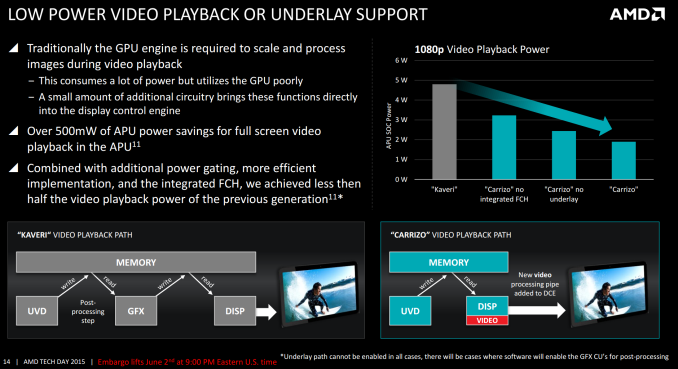
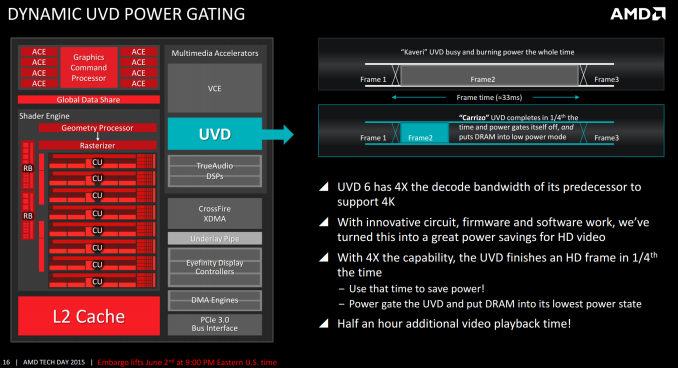
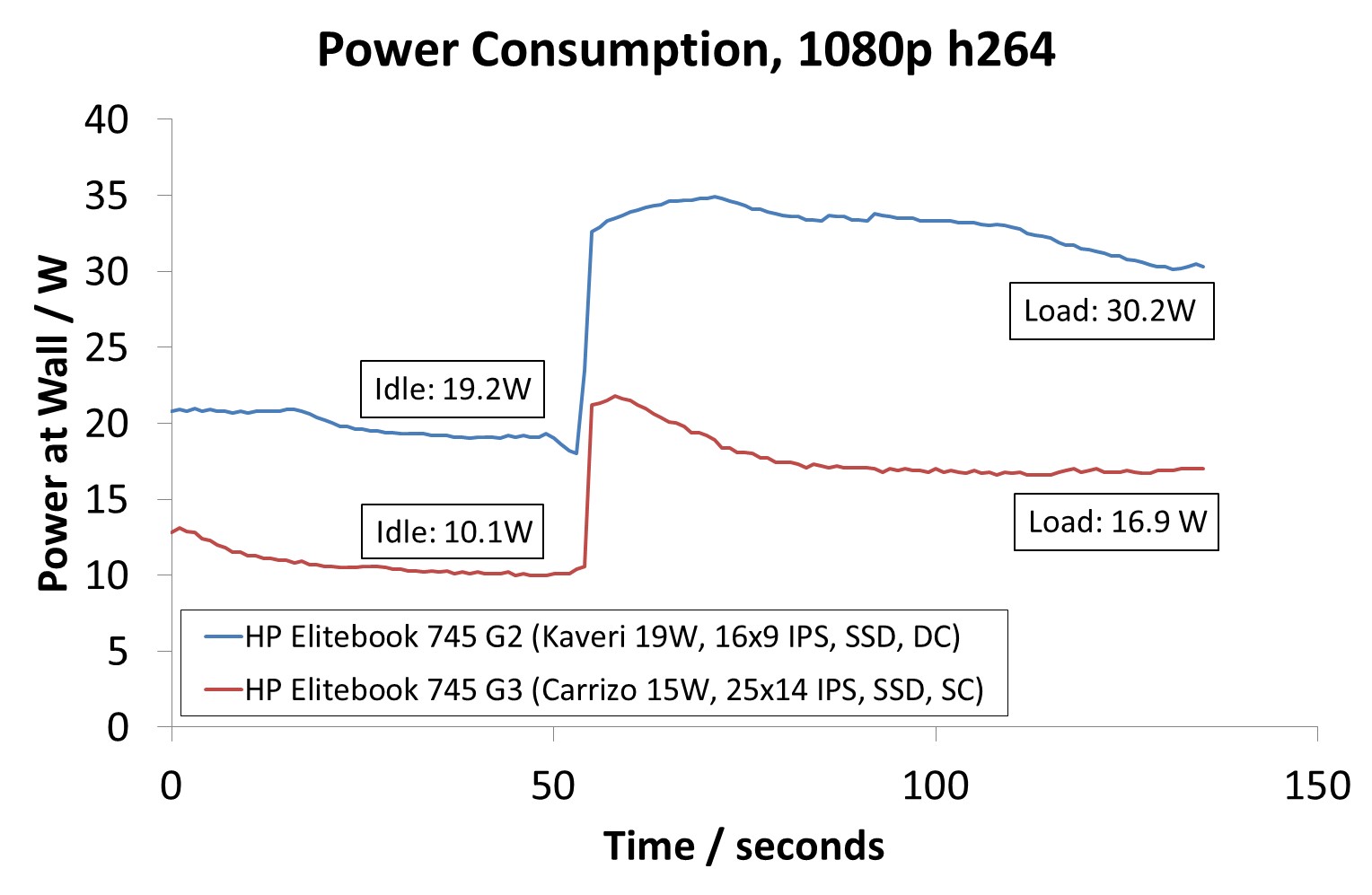
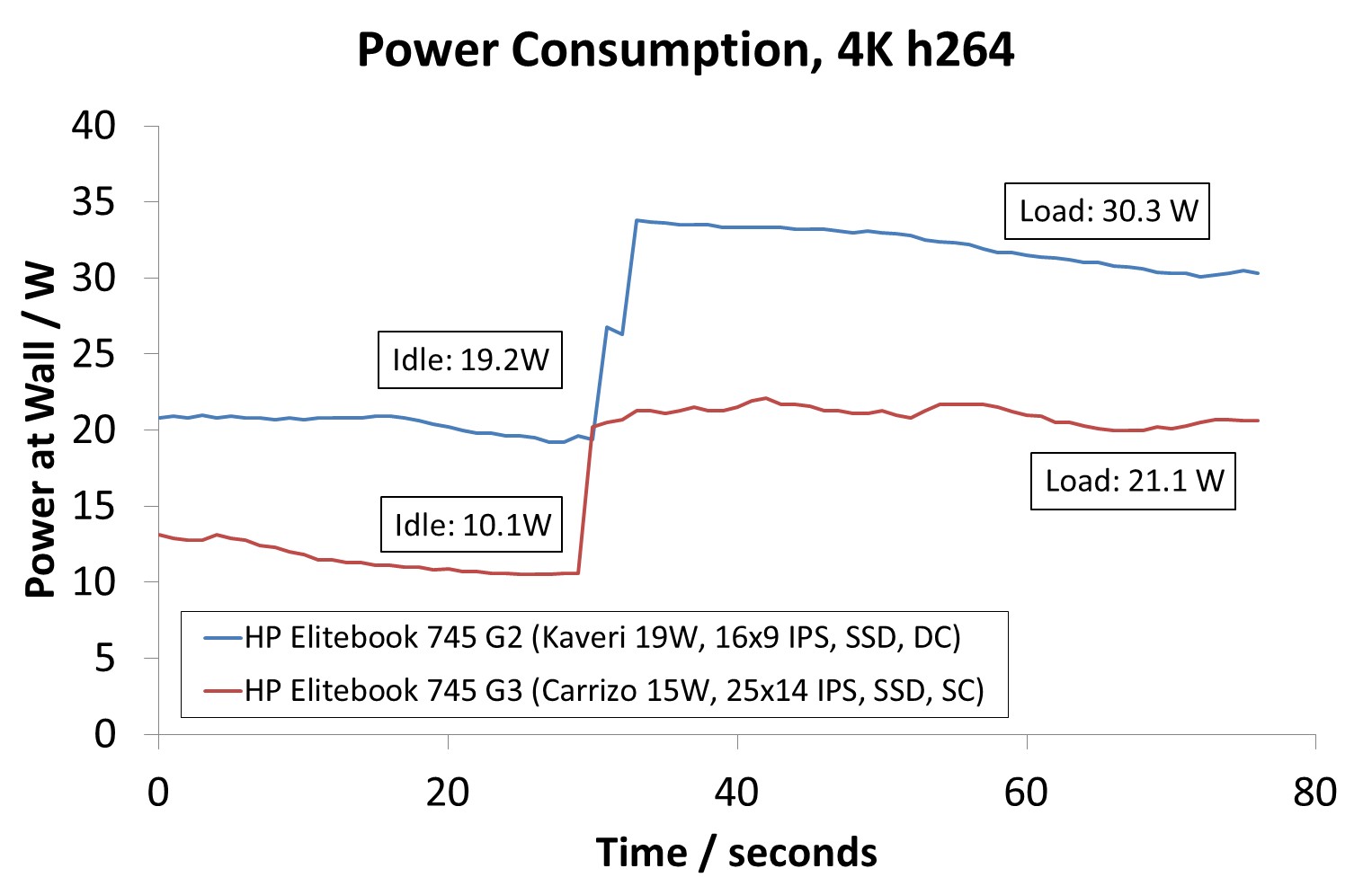
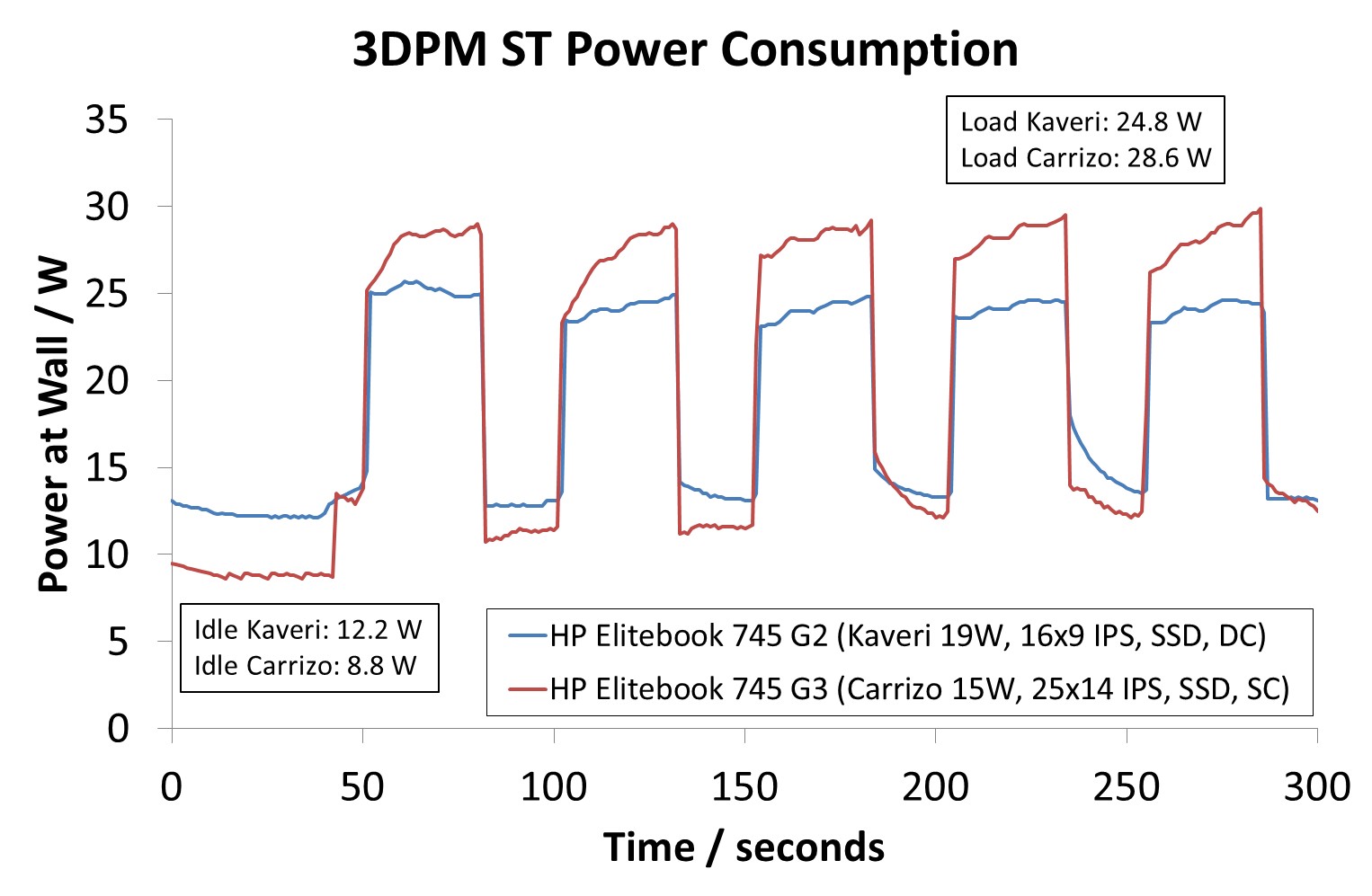
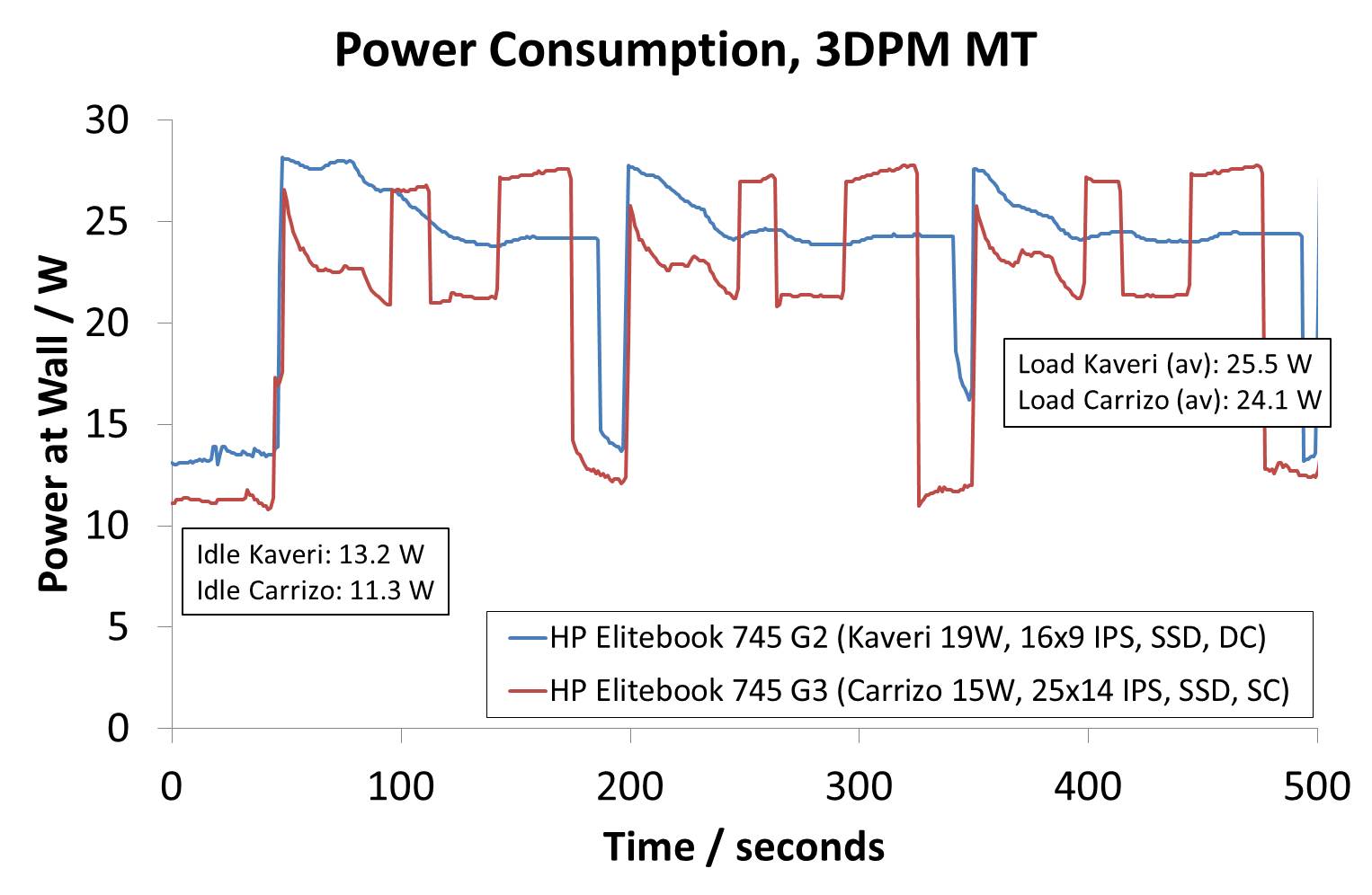
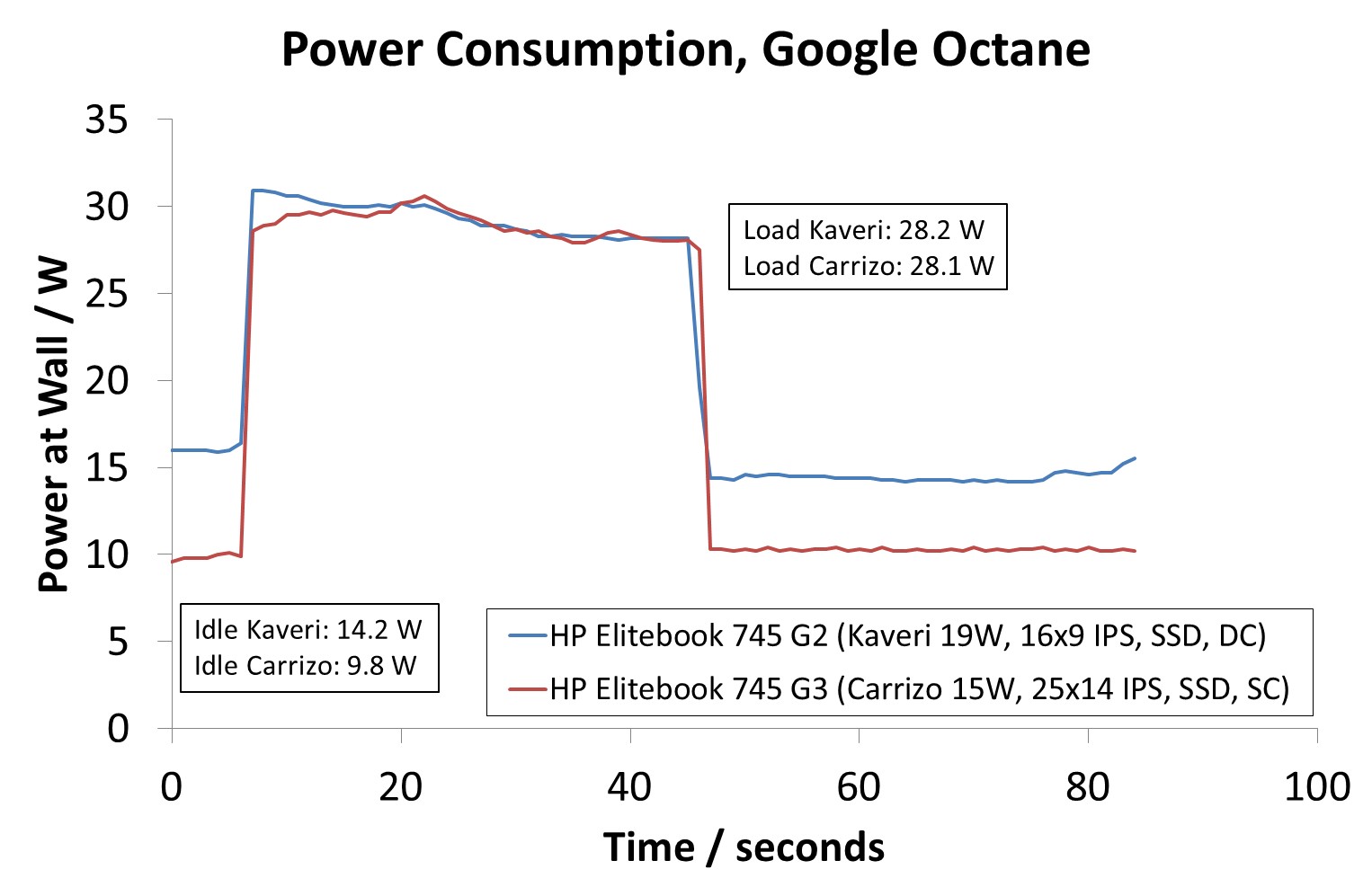
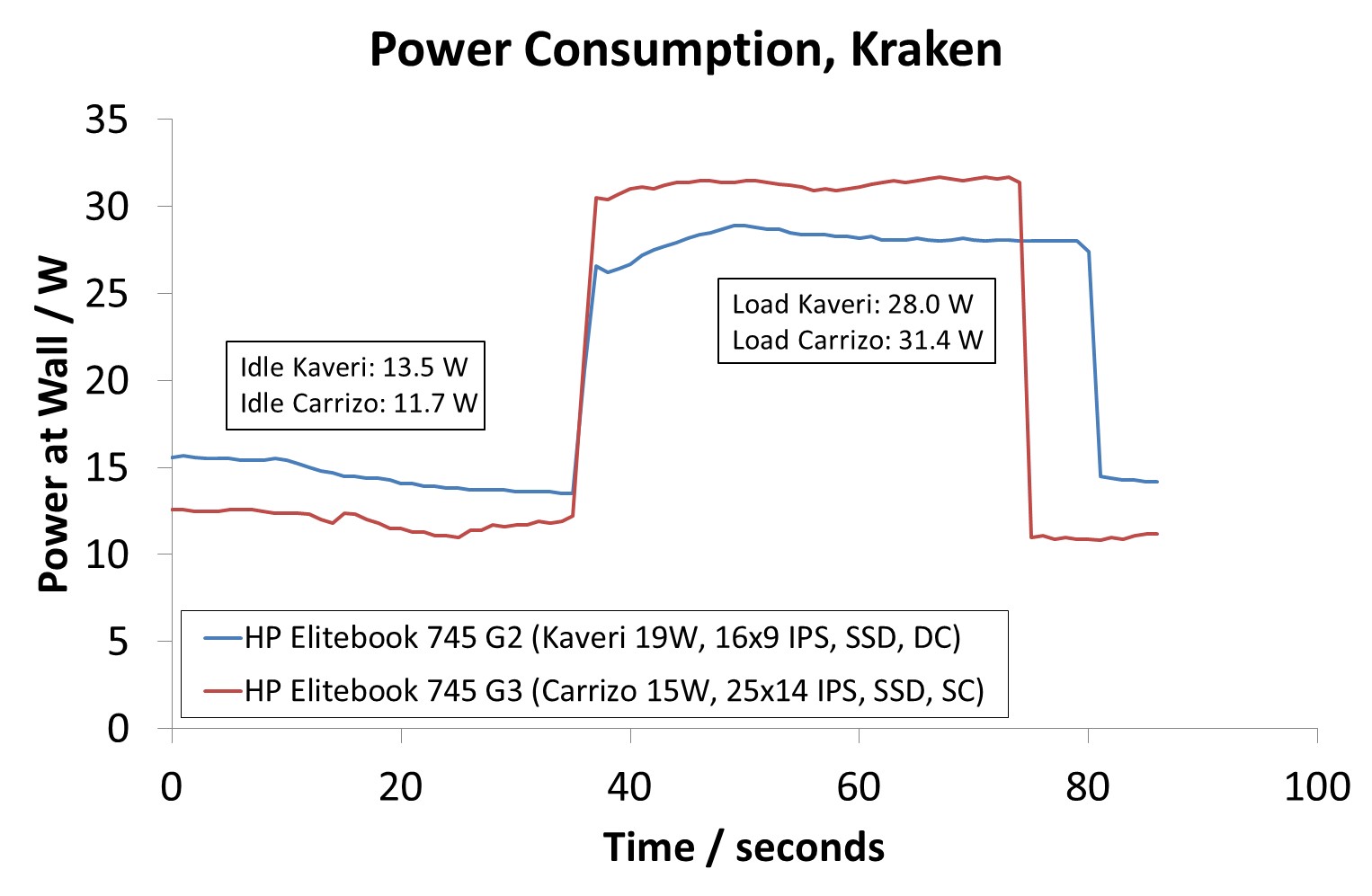

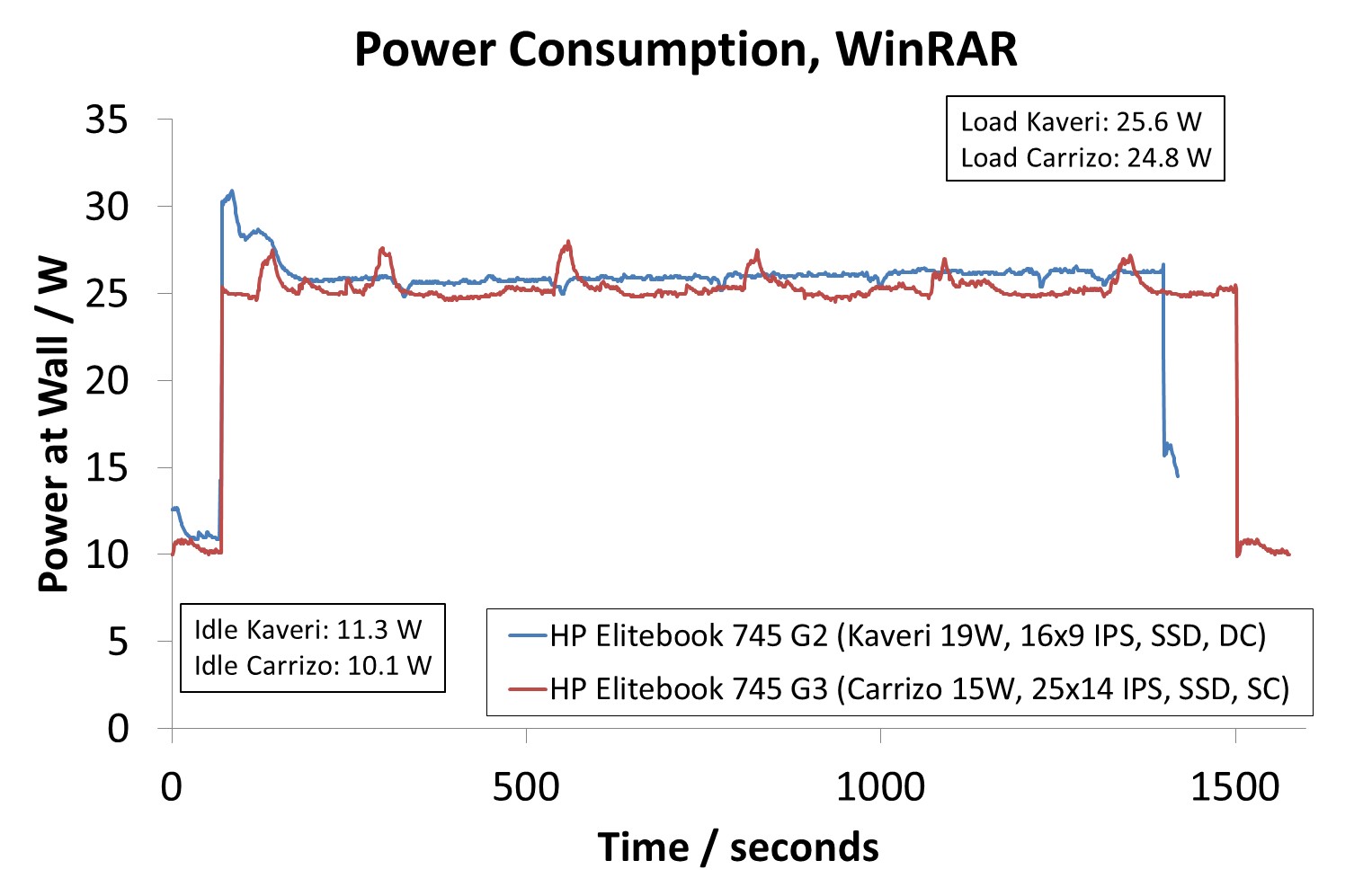








175 Comments
View All Comments
alexruiz - Friday, February 5, 2016 - link
Ian,What specific model of the Elitebook 745 G3 did you test?
You listed the QHD screen (2560 x 1440 IPS) but you also wrote that it came in at just under $700. Is this correct? The one that you received for $700 included the QHD screen?
Thanks
Anonymous Blowhard - Friday, February 5, 2016 - link
The link on the page goes to the T3L35UT#ABA, which is a 1080p screen. I'm guessing the spreadsheet and/or pricing is incorrect somehow.Ian Cutress - Friday, February 5, 2016 - link
I remember being told it was 700, though I may have misheard and perhaps they were speaking GBP. But AB is right, the larger screen is 1080p and more expensive.The HP website is surprising though - the UX on the website is crazy to find a product that isn't the latest and greatest. It is very difficult to find anything and you seem to pay a premium for speccing out a custom Elitebook. Trying to spec out the one I was given came to $1900 from a $1620 base, which clearly isn't right because the high end 'buy now' model was about $1120 with similar specifications.
http://goo.gl/5spQls
Anonymous Blowhard - Friday, February 5, 2016 - link
GBP certainly makes a lot more sense. The base USD$750 model on HP's site has an A8-8600B, 4GB of RAM, and a 500GB HDD. If you want to find a Carrizo system with an "awful user experience" there it is.Custom-building an HP business system from their site is also expensive for no reason other than "because we said so." They really want you to buy the mass-manufactured SmartBuy models, although you may have better luck with a custom unit (read: "reasonable pricing") if you buy from a 3rd-party reseller.
I would like to see some GPU benchmarks with a second stick of RAM added to the 745 G3 though. Single-channel memory gives integrated graphics the Tonya Harding treatment.
Intel999 - Sunday, February 7, 2016 - link
Another review of Carrizo in the HP 745 G3 showed a 30% improvement in gaming when the second stick of RAM was installed. It went from woefully behind Intel to just ahead of them after sufficient RAM was provided.It is remarkable that any OEM would damage their own reputation by putting out crap that is obviously intended to funnel sales to Intel.
Imagine an OEM putting out a model, let's call it HP100, and offering it with identical specs with the only difference being a Carrizo CPU vs. an I5 from Intel. Few if any, would notice a difference in performance in the real world, not talking benchmarks.
The OEM would have a $100 savings on the Carrizo version if not more. If they were to sell it for $50 less than the Intel version they would sell more and that extra $50 profit on the AMD machine would more than offset the "rebates" they are getting from Intel. So they could have a higher profit margin at a lower price point. Afterall, with all the Intel marketing you'd still have plenty of people opting for the Intel version with it's lower profit margin. Just not as many and overtime you could approach Intel and point out that you make more money off AMD machines and who knows, maybe for the first time in recent history the OEM would control how their company is run and Intel would say "I guess we can cut our price by $25" and then you would be making the same profit on both Intel and AMD machines since, of course, the OEM wouldn't pass that $25 to the customer.
They could still offer junk machines at lower price points. Fill em up with Celerons or whatever they wanted attached to HDDs, 4GB of RAM, and crap screens.
Surely, no OEM is still following the old Intel rebate plan that allowed Intel to determine the market share that the OEM is allowed to give AMD. Or, are they?
Lolimaster - Friday, February 5, 2016 - link
I hate HP store with all my might, back in the day I got better experience donwloading from japanese p2p's not knowing japanese and just using a simple guide.keeepcool - Friday, February 5, 2016 - link
Please, just dont let Toshiba make laptops, just DON'T.Sorry for the word, but Toshiba is a shit brand that deserves to die. All their laptops have cooling solutions that are badly designed from the start, and the they cut all the corners and go for paper thin 4mm heatpipes on top of deformed and pitted 1.5mm cooper plates that make poor contact with the dies, the fans are thin, the thermal paste is worse than toothpaste, just stop allowing them to disgrace AMD name.
HP is also guilty of this, after the disgrace that where the dv6 models almost no one in Portugal and a lot other countries ever want a laptop with AMD cpu or gpu, because DV6's are just know for being litteral toasters that crash and burned, yes part of that was due to lack of maintenance, but still, it left a very sour taste regard AMD/ATI equiped laptops.
Today only people with low monetary margins will go for an AMD laptop, because they are the cheapest ones, and even then HP and Toshibas just manage to make toasters out of 7 and 15Watts TDP, its like they actually spend time engineering them to became so hot with so little TDP's...
tipoo - Friday, February 5, 2016 - link
50.27 Wh, 3 cell Li-Po design, rated to 10.25 hours. Out of a 3.3GHz AMD APU.You know, HP, somehow, I don't believe you.
bluevaping - Friday, February 5, 2016 - link
Nice article. And I get the point of the article about OEM's and AMD. I mostly agree with Shadowmaster 625. But it would have been nice to see a dual channel memory test. The Elitebook supports it. Slap in the extra ram and test it. And try dual channel 1866 Ram too.tipoo - Friday, February 5, 2016 - link
Shame the Lenovo doesn't support dual graphics - any reason why, or will this be updated in drivers? Especially as the integrated one has the same number of SPs as the dedicated, it could add a lot to the power equation.